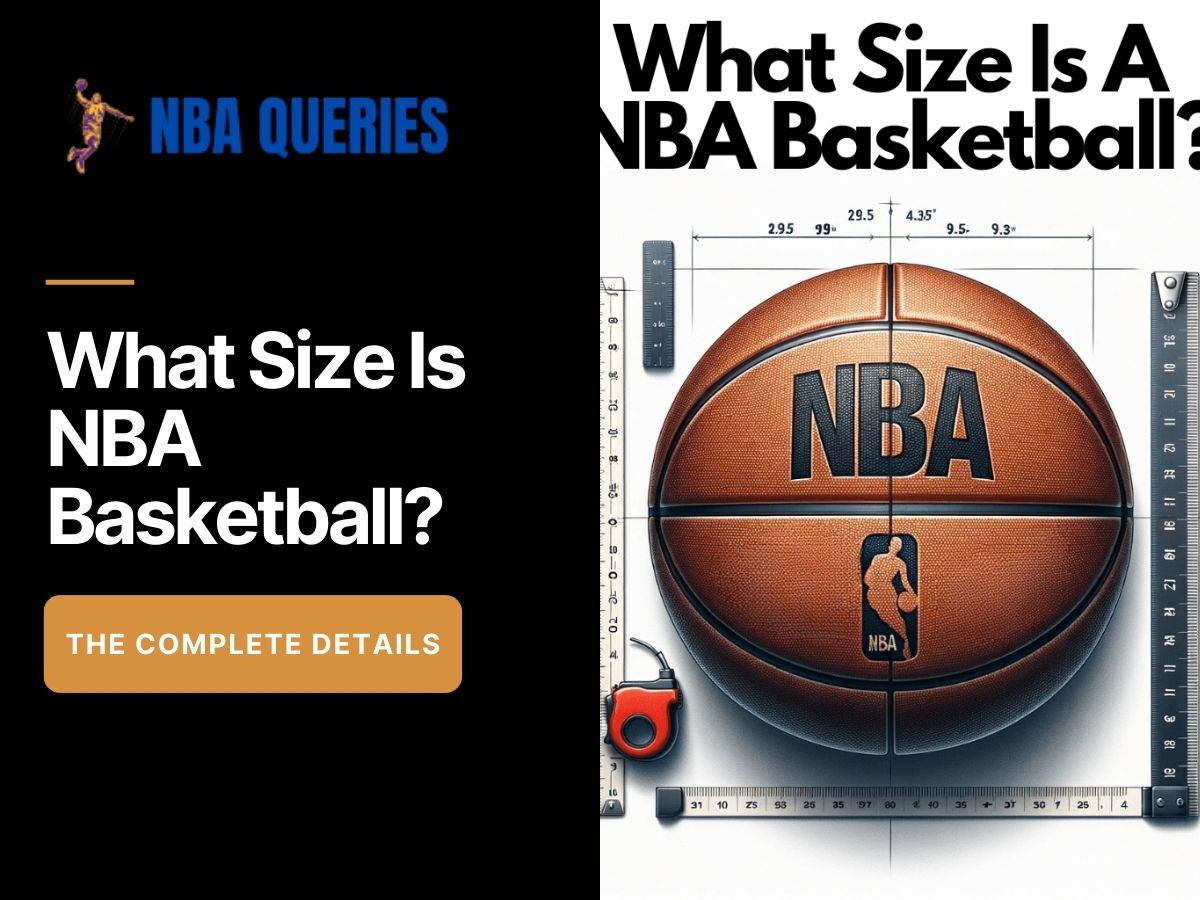Basketball, the quintessential American sport, has a rich history and a global following. At the heart of every intense game, whether played in a neighborhood court or a professional arena, lies the basketball itself. The size, weight, and construction of this spherical object significantly impact the game’s dynamics. In this detailed guide, we’ll delve into the intricacies of the official NBA basketball, demystifying its dimensions, materials, and air pressure. Whether you’re a player, a fan, or simply curious, let’s explore what makes an NBA basketball unique.
1. Official NBA Basketball Size
The National Basketball Association (NBA) sets stringent standards for its game balls. The official size of an NBA basketball is size 7, which translates to a 29.5-inch circumference. This measurement is the global standard for men’s basketball leagues worldwide, including FIBA, G League, NCAA, and high school basketball. For reference, a standard women’s basketball is size 6, slightly smaller than the NBA ball. Youth players, aged 9 and under, use a size 5 basketball.
Dimensions at a Glance:
- Circumference: Approximately 29.5 inches (74.9 cm)
- Diameter: Approximately 9.39 inches (23.85 cm)
- Weight: Standard weight of 22 ounces (approximately 623.7 grams)
- Air Pressure (PSI): Must be inflated between 7.5 and 8.5 PSI for official games.
2. The Material and Construction
An NBA basketball is a marvel of engineering, designed for optimal performance. Let’s break down its layers:
a. Bladder/Core:
- The innermost layer, often called the bladder or core, provides the ball’s shape and bounce.
- It’s typically made of rubber or synthetic materials.
b. Winding Layer:
- The winding layer surrounds the bladder and consists of tightly wound nylon or polyester threads.
- These threads enhance durability and maintain the ball’s shape.
c. Carcass:
- The carcass layer sits atop the winding layer.
- It’s usually made of rubber or a composite material.
- The carcass contributes to the ball’s overall structure and responsiveness.
d. Cover:
- The outermost layer, the cover, directly affects grip, feel, and aesthetics.
- The official NBA basketball uses a 100% genuine leather cover sourced from Horween Leather, a Chicago-based company.
- Unlike most high school or college indoor basketballs, which use synthetic or composite leather, the NBA ball’s real leather cover feels slick yet slightly rough initially. It requires some breaking in.
3. Bounce and Consistency
The NBA specifies the ideal bounce for its basketball. When dropped straight down from a height of 72 inches, the ball should rebound between 52 and 56 inches. Achieving this consistency involves a delicate balance of material properties, air pressure, and construction.
4. Brand Transition: Spalding to Wilson
For decades, Spalding held the honor of producing NBA game balls. However, in 2021, the NBA switched to Wilson as its official ball supplier. Wilson’s commitment to quality and innovation ensures that NBA players continue to experience the best possible basketball.
5. The Evolution of NBA Basketball Design
a. The Leather Era:
- For decades, NBA game balls were synonymous with Spalding’s genuine leather covers.
- Players cherished the tactile feel and grip of these leather balls.
- However, leather had its quirks—it absorbed moisture, expanded when wet, and required meticulous care.
b. The Synthetic Transition:
- In the early 2000s, the NBA experimented with synthetic composite leather.
- These balls were more consistent in shape and bounce.
- Yet, purists missed the nostalgic scent of leather and its unique texture.
c. The Return of Leather:
- In 2006, the NBA reintroduced leather basketballs, addressing the material’s limitations.
- The Spalding TF-1000, with its microfiber composite cover, became the official ball.
- It combined the best of both worlds—leather-like feel and moisture resistance.
d. The Wilson Era:
- In 2021, the NBA switched to Wilson as its official ball supplier.
- Wilson’s Evolution and Evolution Plus models now grace NBA courts.
- These balls feature a composite leather cover that mimics the feel of genuine leather.
- The Evolution Plus even boasts a cushion core for enhanced grip and control.
6. The Air Pressure Game
a. The Sweet Spot:
- NBA basketballs must be inflated to a precise air pressure.
- Too much or too little affects bounce and shooting accuracy.
- The sweet spot lies between 7.5 and 8.5 PSI (pounds per square inch).
b. The Ritual:
- Before every game, players meticulously check their basketballs.
- They ensure the right pressure for optimal performance.
- Imagine LeBron James, eyes focused, gently squeezing the ball—seeking that perfect balance.
c. The Altitude Factor:
- Air pressure changes with altitude.
- When NBA teams play in Denver (known as the Mile High City), the thinner air affects ball behavior.
- Players adjust their shooting techniques accordingly.
7. The Sound of Swish
a. The Perfect Swish:
- When a basketball glides through the net without touching the rim, it creates the iconic “swish” sound.
- The ball’s size, weight, and aerodynamics contribute to this auditory delight.
b. The Physics Behind It:
- A well-inflated NBA basketball, with its consistent bounce, ensures smoother shots.
- The backspin players impart on the ball helps it maintain stability in flight.
- When the ball meets the net at the right angle, magic happens—the swish!
8. The Legacy Lives On
a. The NBA Logo:
- The NBA’s iconic logo features a silhouette of Jerry West, dribbling an NBA basketball.
- This timeless image symbolizes the league’s spirit and passion.
b. The Game Changer:
- The NBA basketball isn’t just equipment; it’s a game changer.
- From Michael Jordan’s gravity-defying dunks to Stephen Curry’s three-point wizardry, every historic moment involves this spherical companion.
Conclusion
Next time you watch an NBA game, pay attention to the ball—the silent protagonist that weaves dreams, records, and legacies. Remember, it’s not just a ball; it’s a piece of history, a vessel for passion, and the heartbeat of basketball.

